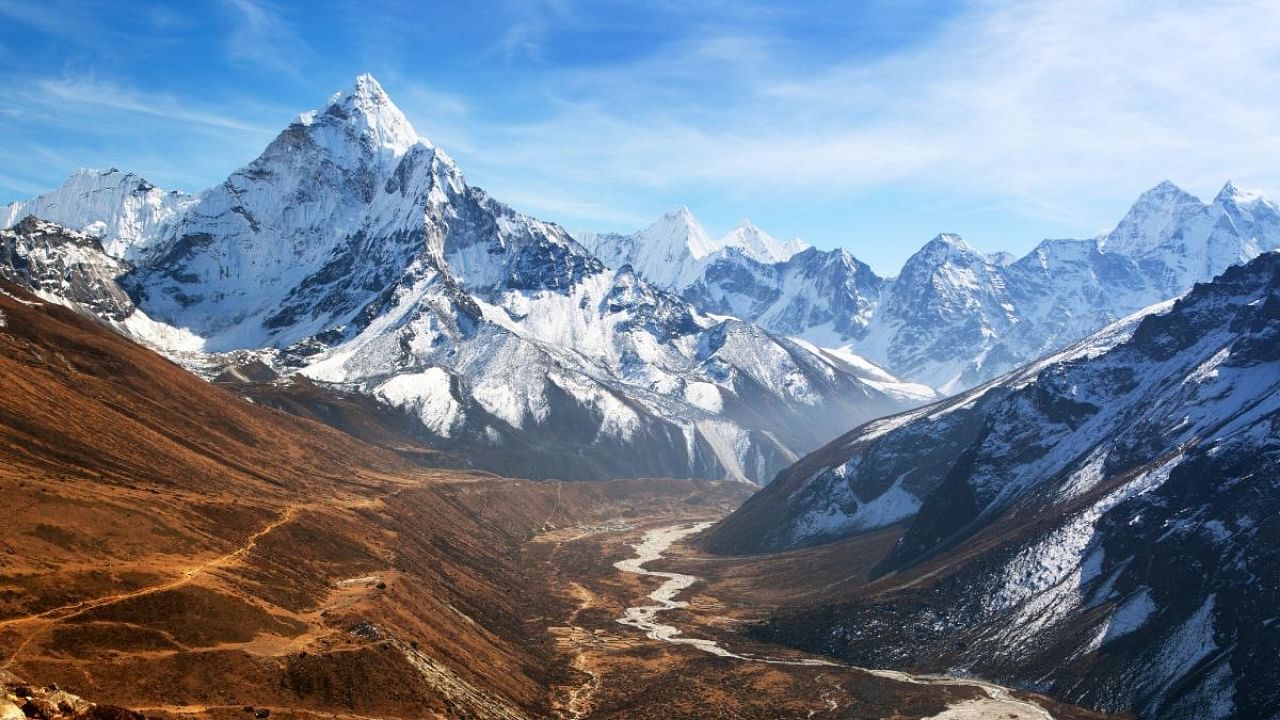
An Indo-Japan team of scientists including researchers from Bengaluru have discovered 600 million year old ocean water in the rocks from the Himalayas providing the first direct evidence on the existence of a gigantic ocean that existed before the Tethys Sea while offering new clues on mysteries surrounding the origin of complex lives on the Earth.
The researchers not only found water droplets trapped inside a mineral, but also came up with a novel explanation for a long unresolved question: how a substantial quantity of oxygen was produced during the early Earth’s history – a primary driver of biological evolution.
“Until now no traces of ocean water from the 600-million year old ocean have ever been found. We derived the age of the water from the age of the mineral-bearing rocks that entrapped them. Our studies show that those early-earth water droplets are comparable to present ocean water,” Sajeev Krishnan, team leader and professor at the Centre for Earth Sciences at the Indian Institute of Sciences, told DH.
The mighty Himalayas came into existence around 40-50 million years ago and the marine rocks were formed in paleo-oceans like Proto-Thethys and Tethys Sea that existed over 250 and 600 million years ago respectively.
What the IISc team in collaboration with Niigata University in Japan has found is the evidence of preserved seawater from Proto-Tethys that preceded the Tethys Sea.
The water droplets trapped inside the minerals have signatures of both ocean and freshwater signalling a chain-reaction arising from a series of complex geological processes that swept the earth hundreds of million years ago triggering epochal changes.
In an attempt to unravel the past geological secrets hidden in magnesites, the scientists carried out three months of field studies in the western Himalayas to collect chemically pristine rocks, which they studied extensively in the laboratory.
They wanted to figure out how an event like the Snowball Earth when the entire globe was enveloped by a kilometre-thick ice cover 750-580 million years ago, led to big changes in the biota and the chemical composition of the oceans and atmosphere, resulting in the release of large amounts of oxygen.
“We finally realised that the magnesites were formed at a time when the paleo-oceans were nutrition deficient, thanks to the widespread glaciation, which froze the rivers that ferried the nutrients,” said IISc Ph.D student Prakash Chandra Arya, first author of the study.
“Such an environment favoured growth of certain types of microbes (cyanobacteria) that grow more in nutrition-deficient conditions and release much larger quantities of oxygen. Their numbers kept on expanding as nutrients disappeared from the surroundings,” he explained.
As the nutrition (like calcium) supply diminished, the microbes adapted to the new surroundings because of an overload of magnesium that was aplenty in the sea water.
The environment was conducive to the growth of large stromatolites (sedimentary rocks formed by layers of cyanobacteria) as the microbes were probably involved in the binding and trapping of magnesium from the water column.
“As the magnesites were being formed in the paleo-oceans, the minerals captured glacial meltwater as well as ocean water inside them, preserving the evidence of how the long-lived glacial events produced significant chemical and biological changes in the oceans,” Krishnan said.
The study has appeared in the journal Precambrian Research.
